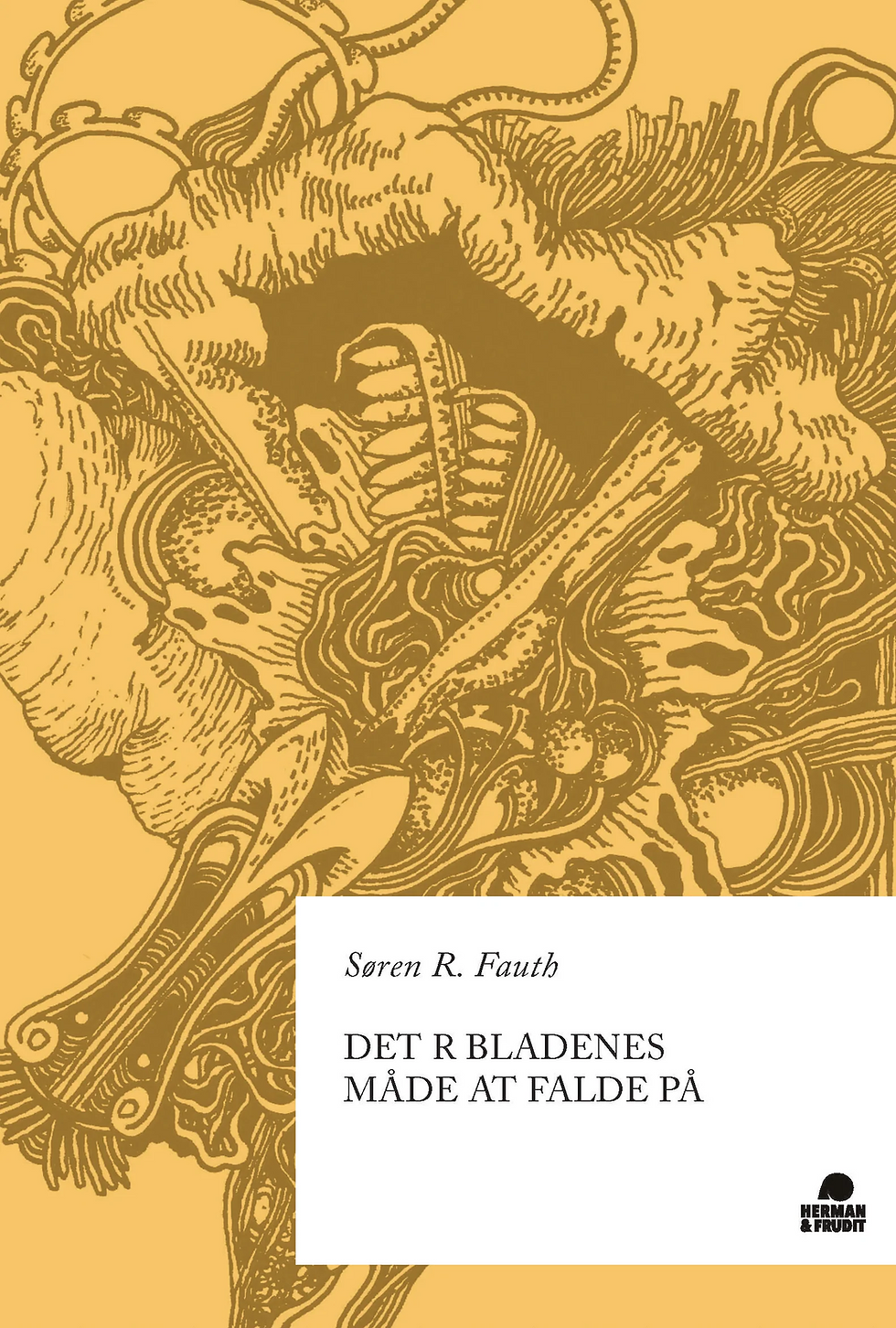Mark Tholander HÅNDBOG I TEGNING (2019)
- Matt Travers
- Nov 2, 2020
- 4 min read
Updated: Feb 26, 2021

In one of the series of fizzing philosophical ruminations and postures which belongs to his disingenuously titled ‘Diary’, Witold Gombrowicz launches a mock polemic against what he takes to be the naïve complacency of artists who believe that a) painting brings out what’s best in the world, and b) that they are the ones uniquely blessed with the talent to perceive it. Gombrowicz reminds us of the actual crudity of painting, with its viscous oil paint, its threaded canvas and pig-hair brushes, and worse, its fundamental premise in a violent simplification, reducing our four dimensional space-time continuum into a cheap gilt-framed flat rectangle ‘as if you took to painting explosions of cosmic light with a toothbrush.’ (332) For Gombrowicz, the notion of movement and depth in painting is a consensual illusion so old that we’ve forgotten its deceptive origins. Wherever value lies in painting, it is not in its mimetic quality. So, is it only prestige that makes us kneel in reverence before the greats, after carefully checking the label to ensure the work is worthy?
Mark Tholander’s ‘håndbog i tegning’ begins with what's considered to be one of the first instances of art criticism in Pliny’s ‘Natural History’ and recounts the competition said to have occurred around 500 BC between Parrhasius and Zeuxis concerning who could paint the most realistic image. On the day their works are unveiled, Zeuxis gets off to a good start, as his painting, which features a platter of grapes, is so convincing that real birds swoop down to peck at them; but when Zeuxis asks Parrhasius to remove the curtain in front of his submission, he discovers that the painting is the curtain itself, and so Parrhasius wins: Zeuxis concedes that tricking a human takes more skill than tricking the birds.
Yet we can assume that Pliny, writing up this account around 77-79AD, was conscious of the story’s implicit irony. Why should a painting of some simple artificial drapery be considered superior to a complex still-life of many organic forms? And wasn’t Zeuxis only tricked into believing the reality of Parrhusius’s painting because he was expecting something more dramatic and impressive? Today, while we can imagine contemporary conceptual artists quickly frustrating such a competition by declaring a hanging curtain a ready-made, Tholander’s ‘håndbog i tegning’ treads down a delicate path between abstraction and figuration without falling into the generalisations of empirical psychology, nor losing its object in a fog of metaphysics. Instead, it is a dialectical account of drawing based on how rather than what we see. After all, what else did Zeuxis appreciate in Parrhasius’s curtain, if not its capacity to make him perceive something that was already 'more' than nature?

What follows in the ‘håndbog’ is a careful axiomatic unfolding of the draughtsman’s craft, beginning with its minimal constituents in the point, line and plane. Initially, Tholander’s disarmingly simple accompanying drawings might seem like a deliberately bathetic gesture, on a par with Zeuxis’s curtain, but as the study progresses their pedagogic intent becomes clear. Their simplicity makes us extremely sensitive to what can be said to be their ‘cusp of figuration’. Furthermore, not only are the purity of the drawings focused responses to whichever point Tholander wants to make, they are also free from the kind of predictable kitsch which spoils many a guide to constructive drawing. This ‘håndbog i tegning’ contains no bald-headed versions of the ‘Vitruvian man’. Such restraint is all the more impressive given Tholander’s pedigree in classical drawing, having been admitted and trained at the elite ‘Russian State Academy for Arts’, where potential candidates must learn Russian just as a sign of commitment. Think of a would-be martial arts student, straight out the Shaw Brothers, kneeling outside the Shaolin temple for day and refusing all food and water to prove their dedication, and you’ll get the idea. Consequently, the occasional moments of concrete advice on how to draw arms, hands and craniums and that sharp line of the chin into which one can escape will surely be highly valued by future students.
Aside from being a ‘håndbog’ of how to draw, it is also, implicitly, a journey through the philosophy of art, invoking Kandinsky’s notion of rhythmic movement and Klee’s notion of rendering bodies visible at the outset. Tholander’s writing style is broadly reminiscent of Per Kirkeby’s combination of intellectual insouciance and farmer’s wit, and the ‘håndbog’ takes us from Pliny’s earliest art theory all the way up to a reflection on Hegel’s thesis on the ‘end of art’. Most impressive to this reader are the points at which the investigation of the building-blocks of drawing are mirrored in the construction of new portmanteau words built from morphemes of preposition and pronoun, as if a new way of perceiving drawing will naturally elicit a new language to describe it.
In this regard, while influenced by the fierce idiom of Hegel and Heidegger, the tenor of his writing remains mercifully empirical, descriptive, and focused on actual drawing rather than summaries of what others have said. Much like Goethe’s ‘foliar theory’ which, through beginning with careful description of the tiny vestigial leaf inside a seed, works up into uncovering nature’s ‘Ur-form’, Tholander seems to be pursuing something similar in his exposition of drawing from first principles onwards. If, ultimately, the ‘håndbog i tegning’ ends by exposing a fundamental deception, then this is only being true to nature’s form. Gombrowicz’s critique of the visual arts is primarily a horror at witnessing those deceivers who deceive without knowing they are deceiving. If you want to get your story of art straight, then you could do worse than to start from the beginning, with what is a decent ‘håndbog i tegning’.




Comments